FERMI FINDS A HALO AROUND PULSAR GEMINGA
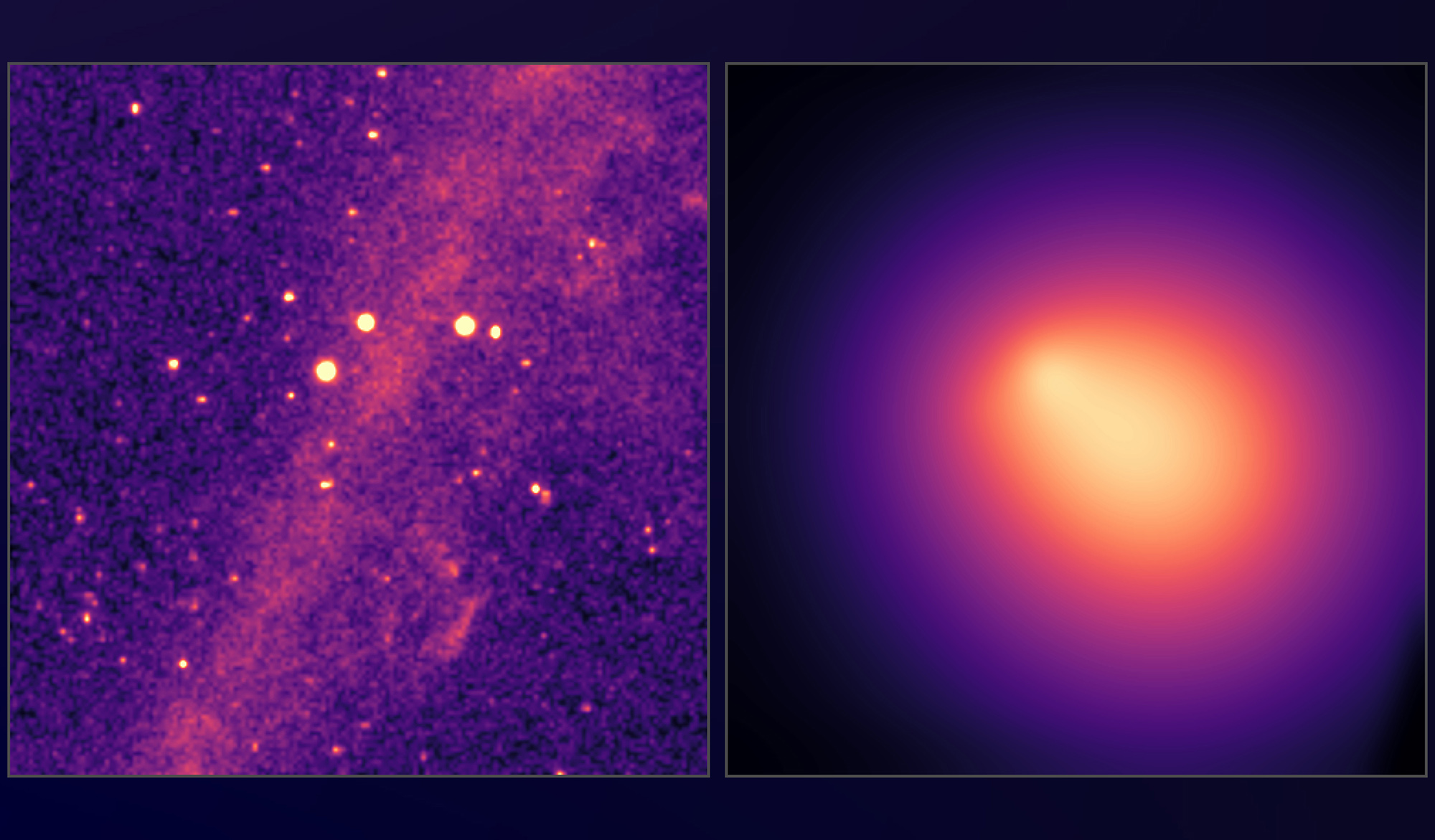 Around the pulsar Geminga, 815 light years far from us, there’s a faint but sprawling glow of gamma rays that could provide the solution to a 10 years long mystery. This is what emerges in a recent study based on the data recorded by the Fermi Gamma-ray space telescope and published on the journal Physical Review D on December 17. The study is the result of a work by researches from the NASA’s Goddard Space Flight Center, the INFN and the University of Turin.The mystery is about some particles, which are surprisingly abundant near the Earth: positrons, the antiparticles of electrons. This excess of positrons was observed in the last 10 years by experiments in space like Pamela, Fermi itself and AMS-02 onboard the International Space Station. And several hypotheses have been made on the origin of this excess: from the pulsars’ emissions to the decay or annihilation of particles of galactic dark matter.In this study, a decade of Geminga gamma-ray data acquired by Fermi’s Large Area Telescope (LAT) at energies higher than 8 GeV was analysed. This allowed not only to discover an extended halo of gamma rays around Geminga, but also to determine its physical characteristics. From the results, it emerges that Geminga alone could be responsible for as much as 20% of the observed positrons. If we consider all the pulsars of our galaxy, pulsars seem to be the main responsible for the excess of positrons observed around the Earth at energies higher than the tens of GeV
Around the pulsar Geminga, 815 light years far from us, there’s a faint but sprawling glow of gamma rays that could provide the solution to a 10 years long mystery. This is what emerges in a recent study based on the data recorded by the Fermi Gamma-ray space telescope and published on the journal Physical Review D on December 17. The study is the result of a work by researches from the NASA’s Goddard Space Flight Center, the INFN and the University of Turin.The mystery is about some particles, which are surprisingly abundant near the Earth: positrons, the antiparticles of electrons. This excess of positrons was observed in the last 10 years by experiments in space like Pamela, Fermi itself and AMS-02 onboard the International Space Station. And several hypotheses have been made on the origin of this excess: from the pulsars’ emissions to the decay or annihilation of particles of galactic dark matter.In this study, a decade of Geminga gamma-ray data acquired by Fermi’s Large Area Telescope (LAT) at energies higher than 8 GeV was analysed. This allowed not only to discover an extended halo of gamma rays around Geminga, but also to determine its physical characteristics. From the results, it emerges that Geminga alone could be responsible for as much as 20% of the observed positrons. If we consider all the pulsars of our galaxy, pulsars seem to be the main responsible for the excess of positrons observed around the Earth at energies higher than the tens of GeV




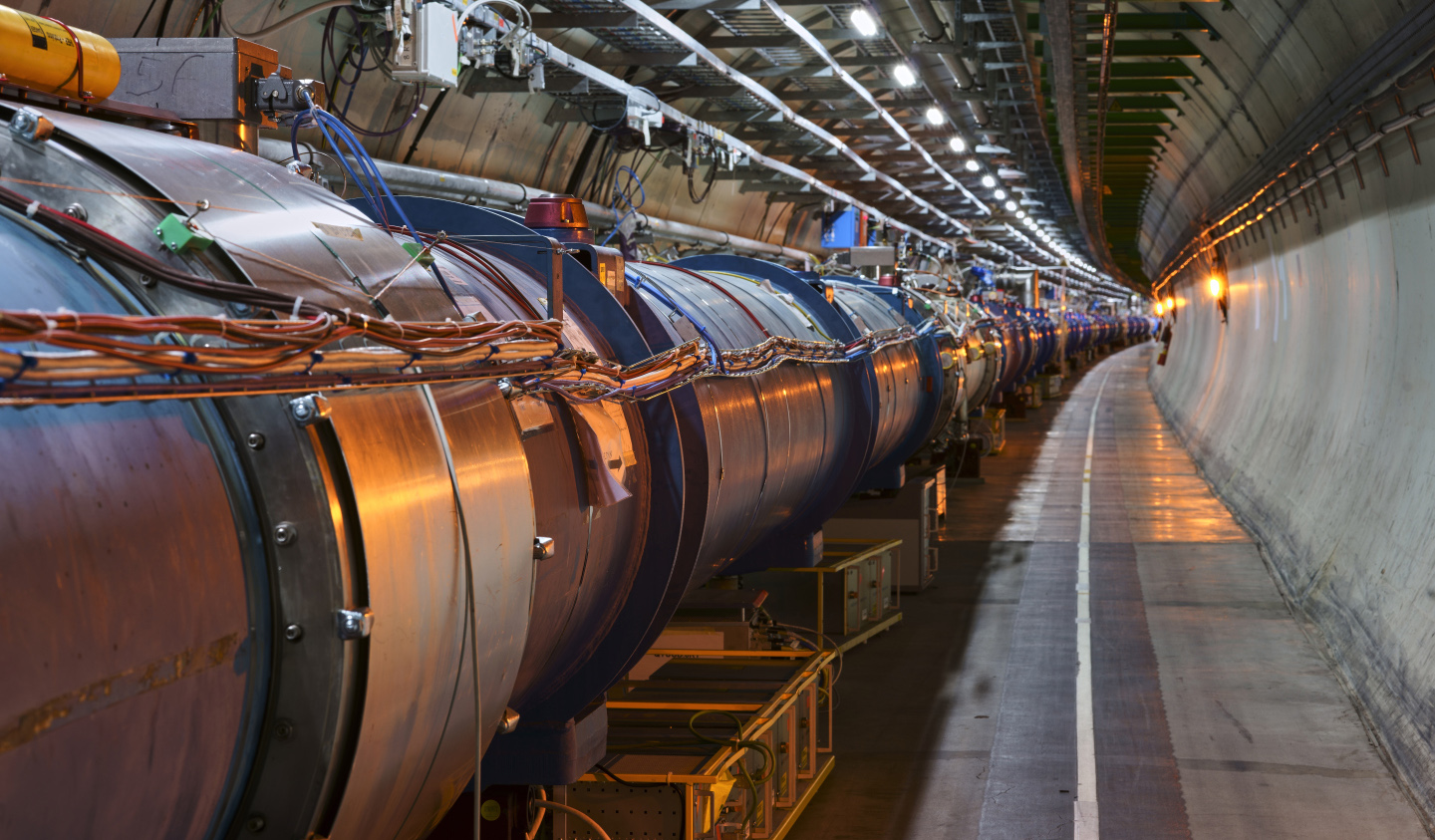 During the Council meeting of 12 December, CERN's management presented the new calendar for the next scientific runs of the LHC accelerator, the Large Hadron Collider. According to the updated programme, the LHC will start up again in May 2021, two months after the initially planned date: the extra time will be needed by the accelerator and the experiments to complete the preparations for run3. The new programme also envisages the extension of run3 by one year, which will therefore last until the end of 2024. At the same time, the machine upgrade projects envisage that all the technological equipment necessary for the future High Luminosity LHC (HiLumi LHC, the high luminosity successor to the current LHC) project and its experiments, will be installed during the Long Shutdown 3 (LS3), between 2025 and mid 2027. HiLumi LHC will come into operation at the end of 2027.Important works are also under way on all machines and infrastructures: the particle acceleration chain has been entirely renewed within the scope of the LHC Injectors Upgrade (LIU) project, new equipment has been installed in the LHC and numerous experiment components, including entire sub-detectors, are being replaced in order to prepare for high luminosity.HiLumi LHC will produce many more collisions than the current accelerator, so as to be able to accumulate as much as ten times more data than its predecessor. The new machine will be able to detect extremely rare phenomena and improve the measurement accuracy. In order to fully exploit the increased amount of data, the experiments have initiated ambitious programmes to upgrade the detectors, also thanks to the work of the researchers and technical staff of INFN, who are carrying out fundamental activities in this enterprise where high technology plays a key role
During the Council meeting of 12 December, CERN's management presented the new calendar for the next scientific runs of the LHC accelerator, the Large Hadron Collider. According to the updated programme, the LHC will start up again in May 2021, two months after the initially planned date: the extra time will be needed by the accelerator and the experiments to complete the preparations for run3. The new programme also envisages the extension of run3 by one year, which will therefore last until the end of 2024. At the same time, the machine upgrade projects envisage that all the technological equipment necessary for the future High Luminosity LHC (HiLumi LHC, the high luminosity successor to the current LHC) project and its experiments, will be installed during the Long Shutdown 3 (LS3), between 2025 and mid 2027. HiLumi LHC will come into operation at the end of 2027.Important works are also under way on all machines and infrastructures: the particle acceleration chain has been entirely renewed within the scope of the LHC Injectors Upgrade (LIU) project, new equipment has been installed in the LHC and numerous experiment components, including entire sub-detectors, are being replaced in order to prepare for high luminosity.HiLumi LHC will produce many more collisions than the current accelerator, so as to be able to accumulate as much as ten times more data than its predecessor. The new machine will be able to detect extremely rare phenomena and improve the measurement accuracy. In order to fully exploit the increased amount of data, the experiments have initiated ambitious programmes to upgrade the detectors, also thanks to the work of the researchers and technical staff of INFN, who are carrying out fundamental activities in this enterprise where high technology plays a key role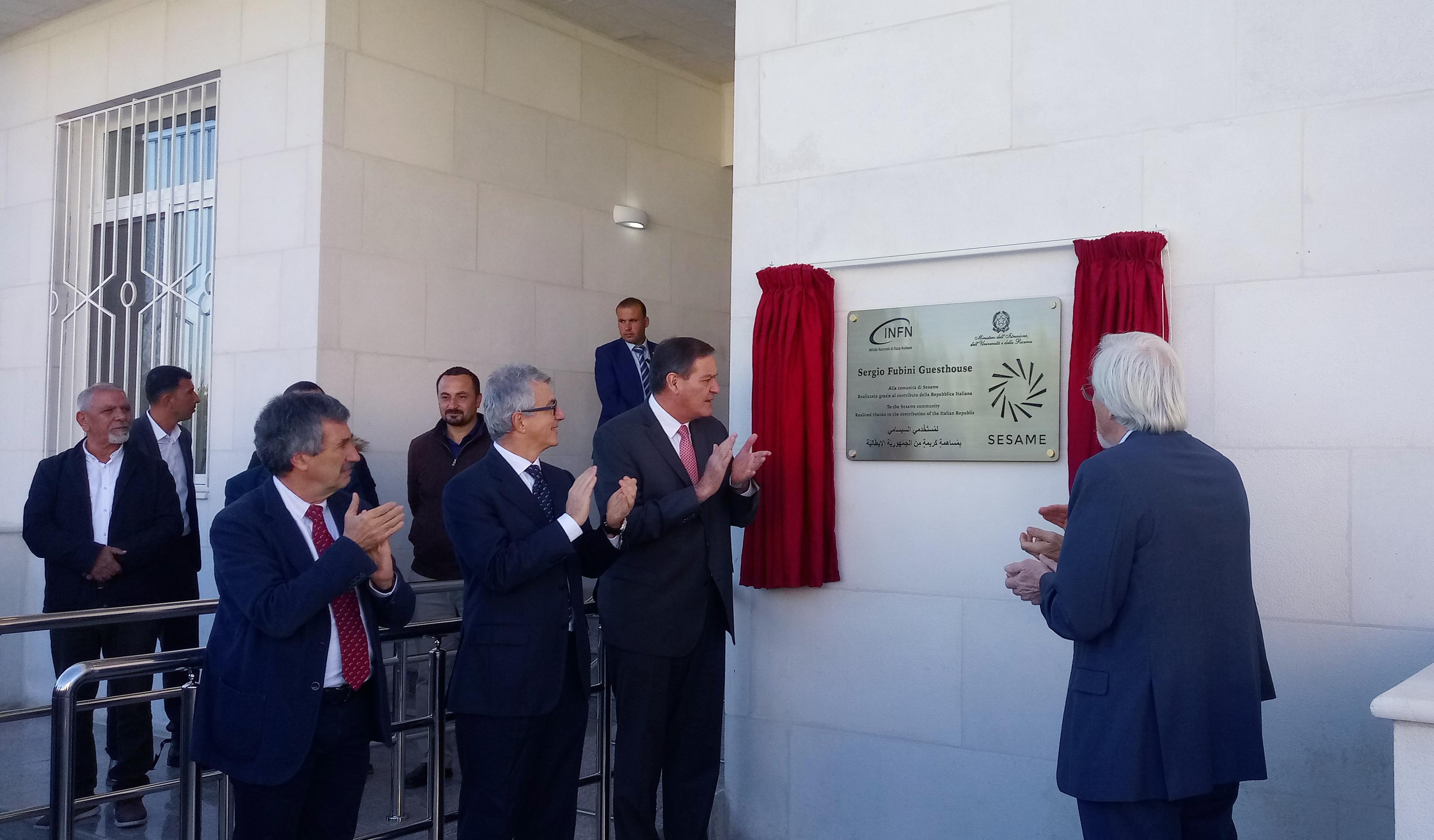 It will host researchers of the SESAME (Synchrotron-light for Experimental Science and Applications in the Middle East) international laboratory, scientists who come from all over the world to work on the synchrotron light source in Allan, Jordan, the first in the Middle East. The SESAME guest house was inaugurated on 4 December, thanks to the fundamental contribution of Italy, with MIUR (the Ministry of Education, University and Research) and INFN. The guest house is intended for scientists, especially young ones, who habitually carry out their research at the SESAME laboratory, with the aim of creating a place for sharing, dialogue and exchange.Inaugurated in 2017, SESAME is a "special" laboratory, because it represents an opportunity not only for scientific knowledge and technological development, but also for economic growth and especially for intercultural dialogue in a troubled area, bringing together people - Palestinian National Authority, Cyprus, Egypt, Iran, Israel, Jordan, Pakistan and Turkey - which have difficulty in finding other common ground for collaboration and discussion. The Italian Government has been participating in the project since 2013, through MIUR and the technological and scientific expertise of the INFN research community.The heart of SESAME is an internationally competitive third generation synchrotron light source, which is now a resource for the entire MENA (Middle East and North Africa) region. It is a very powerful microscope, based on an electron accelerator, allowing studies and applications in many fields, including physics, life sciences, materials science and archaeometric studies. SESAME is therefore a centre of excellence for multidisciplinary research, able to attract scientists from various countries and very different sectors
It will host researchers of the SESAME (Synchrotron-light for Experimental Science and Applications in the Middle East) international laboratory, scientists who come from all over the world to work on the synchrotron light source in Allan, Jordan, the first in the Middle East. The SESAME guest house was inaugurated on 4 December, thanks to the fundamental contribution of Italy, with MIUR (the Ministry of Education, University and Research) and INFN. The guest house is intended for scientists, especially young ones, who habitually carry out their research at the SESAME laboratory, with the aim of creating a place for sharing, dialogue and exchange.Inaugurated in 2017, SESAME is a "special" laboratory, because it represents an opportunity not only for scientific knowledge and technological development, but also for economic growth and especially for intercultural dialogue in a troubled area, bringing together people - Palestinian National Authority, Cyprus, Egypt, Iran, Israel, Jordan, Pakistan and Turkey - which have difficulty in finding other common ground for collaboration and discussion. The Italian Government has been participating in the project since 2013, through MIUR and the technological and scientific expertise of the INFN research community.The heart of SESAME is an internationally competitive third generation synchrotron light source, which is now a resource for the entire MENA (Middle East and North Africa) region. It is a very powerful microscope, based on an electron accelerator, allowing studies and applications in many fields, including physics, life sciences, materials science and archaeometric studies. SESAME is therefore a centre of excellence for multidisciplinary research, able to attract scientists from various countries and very different sectors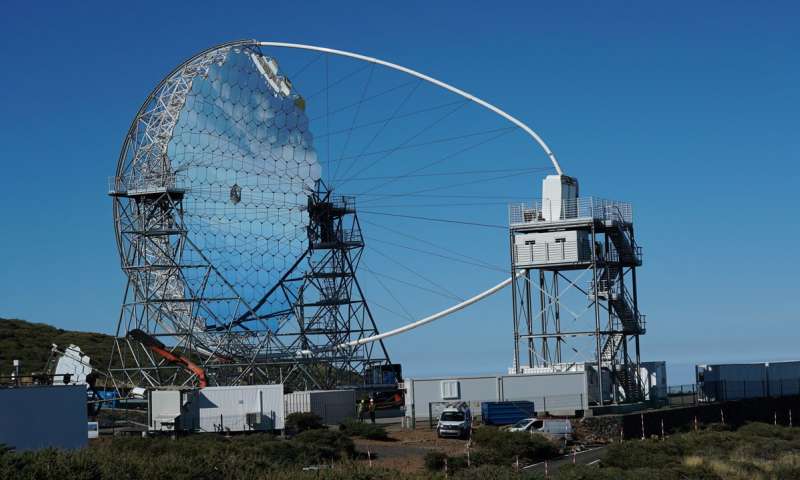 On 23 November, LST-1, the first large telescope of the Cherenkov Telescope Array (CTA) - inaugurated in October 2018 in La Palma, in the Canary Islands - detected its first gamma source by targeting the famous Crab Nebula, considered to be the "standard candle" of high energy astrophysics. This is LST-1’s first detection of a real gamma-ray source, after the "first light" detected by the telescope on the evening between 14 and 15 December 2018. Already from the first analyses of the data collected it was possible in this second event to identify a clear high energy photon (between 20 and 200 GeV) signal coming from the Crab Nebula.After having developed and refined the analysis tools for over a year on Monte Carlo simulations, this result confirms that the tools and the analysis chain, to which INFN contributed significantly, work properly and are able to provide the first scientific results.LST-1 is the first of four Large Size Telescopes that will be present at the two CTA observation sites located in the two hemispheres, one on the island of La Palma (Canary Islands, Spain) and the other near the ESO site of Paranal in Chile.The LST telescopes will be essential for detecting high-energy gamma rays and, thanks also to their fast targeting capability, will study the weakest and most distant sources and transient phenomena, in particular gamma-ray bursts.This first result was also achieved thanks to the significant contribution of INFN and of the various Italian universities involved in the CTA project which, although still in the completion phase, with this success of LST-1, takes an important step forward and opens the way to acquisition of the first scientific data.
On 23 November, LST-1, the first large telescope of the Cherenkov Telescope Array (CTA) - inaugurated in October 2018 in La Palma, in the Canary Islands - detected its first gamma source by targeting the famous Crab Nebula, considered to be the "standard candle" of high energy astrophysics. This is LST-1’s first detection of a real gamma-ray source, after the "first light" detected by the telescope on the evening between 14 and 15 December 2018. Already from the first analyses of the data collected it was possible in this second event to identify a clear high energy photon (between 20 and 200 GeV) signal coming from the Crab Nebula.After having developed and refined the analysis tools for over a year on Monte Carlo simulations, this result confirms that the tools and the analysis chain, to which INFN contributed significantly, work properly and are able to provide the first scientific results.LST-1 is the first of four Large Size Telescopes that will be present at the two CTA observation sites located in the two hemispheres, one on the island of La Palma (Canary Islands, Spain) and the other near the ESO site of Paranal in Chile.The LST telescopes will be essential for detecting high-energy gamma rays and, thanks also to their fast targeting capability, will study the weakest and most distant sources and transient phenomena, in particular gamma-ray bursts.This first result was also achieved thanks to the significant contribution of INFN and of the various Italian universities involved in the CTA project which, although still in the completion phase, with this success of LST-1, takes an important step forward and opens the way to acquisition of the first scientific data.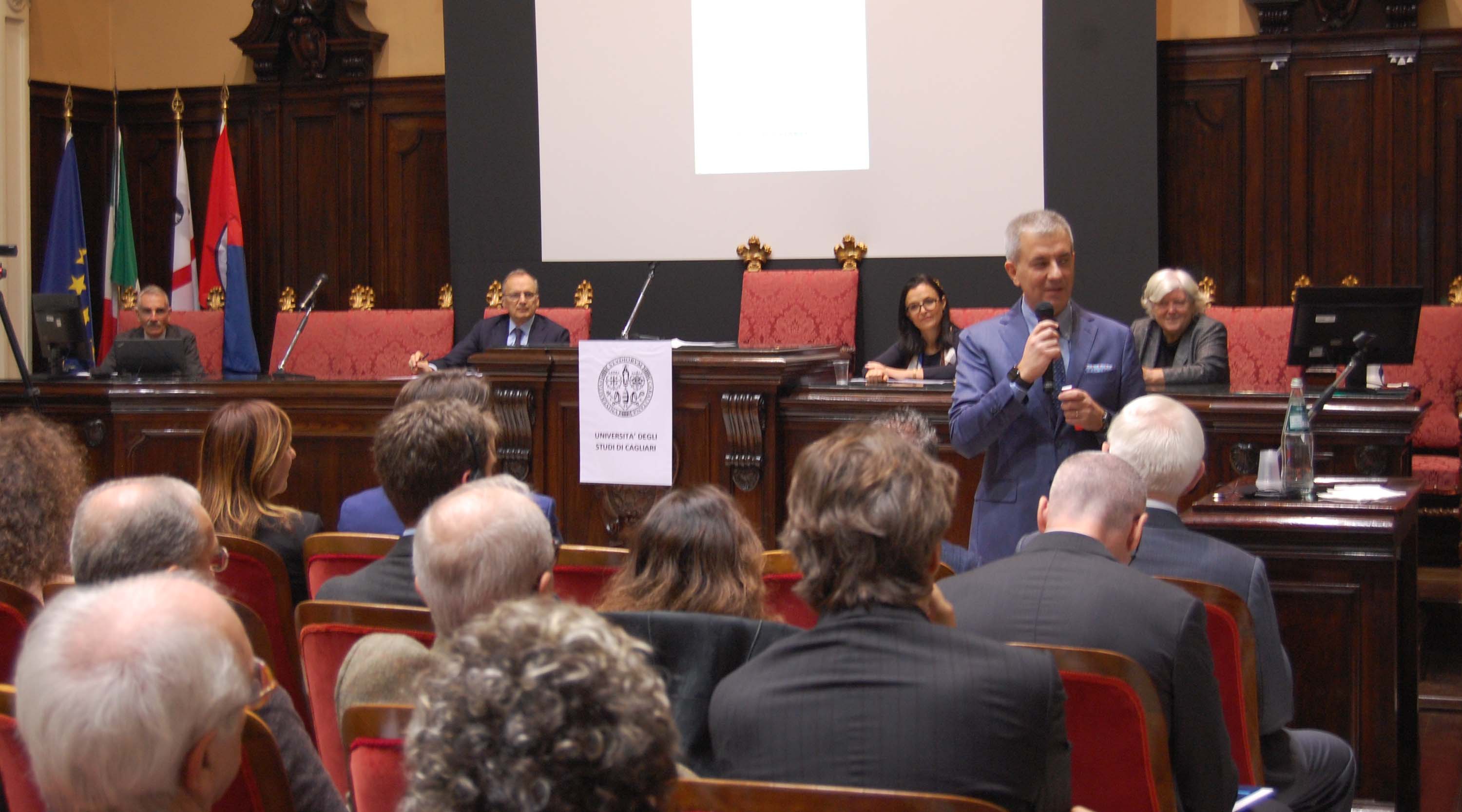 It stems from the research in fundamental physics to respond to an experimental need: to have large amounts of argon available for the search for dark matter with the DarkSide experiment at the INFN Gran Sasso Laboratories. But in the future it could also be used for the distillation of other isotopes increasingly used in medicine, both in advanced diagnostics and in cancer therapy, and also in environmental and agricultural sciences. This is the ARIA project, whose first results, following the tests performed on the Seruci-0 cryogenic distillation pilot tower, were presented on 16 November, during an event held at the University of Cagliari, in the presence of the 2015 Physics Nobel Prize winner, Art McDonald, and representatives of the world of scientific research, business and institutions.The ARIA infrastructure for the production of argon and other elements will consist of a 350-metre cryogenic distillation tower, which will be installed in Well 1 of the Seruci area of the Carbosulcis mine of Mount Sinni. In last July and October, the DarkSide international scientific collaboration carried out two operating campaigns of the Seruci-0 tower, a 24 metres high column. During the two operating campaigns, the Seruci-0 plant distilled nitrogen (N2), allowing the expected performance of the Seruci-1 tower to be extrapolated, which is perfectly in line with the forecasts made during the design phase.ARIA is an unprecedented project at the international level, made possible by the scientific cooperation between INFN, acting as leader and coordinator of the research groups involved, and Princeton University, supported by the Sardinia Region and Carbosulcis. The project also involves local scientific partners with the University of Cagliari and the INFN division of Cagliari and the University of Sassari, with the crucial contribution of Italian companies. ▪
It stems from the research in fundamental physics to respond to an experimental need: to have large amounts of argon available for the search for dark matter with the DarkSide experiment at the INFN Gran Sasso Laboratories. But in the future it could also be used for the distillation of other isotopes increasingly used in medicine, both in advanced diagnostics and in cancer therapy, and also in environmental and agricultural sciences. This is the ARIA project, whose first results, following the tests performed on the Seruci-0 cryogenic distillation pilot tower, were presented on 16 November, during an event held at the University of Cagliari, in the presence of the 2015 Physics Nobel Prize winner, Art McDonald, and representatives of the world of scientific research, business and institutions.The ARIA infrastructure for the production of argon and other elements will consist of a 350-metre cryogenic distillation tower, which will be installed in Well 1 of the Seruci area of the Carbosulcis mine of Mount Sinni. In last July and October, the DarkSide international scientific collaboration carried out two operating campaigns of the Seruci-0 tower, a 24 metres high column. During the two operating campaigns, the Seruci-0 plant distilled nitrogen (N2), allowing the expected performance of the Seruci-1 tower to be extrapolated, which is perfectly in line with the forecasts made during the design phase.ARIA is an unprecedented project at the international level, made possible by the scientific cooperation between INFN, acting as leader and coordinator of the research groups involved, and Princeton University, supported by the Sardinia Region and Carbosulcis. The project also involves local scientific partners with the University of Cagliari and the INFN division of Cagliari and the University of Sassari, with the crucial contribution of Italian companies. ▪

